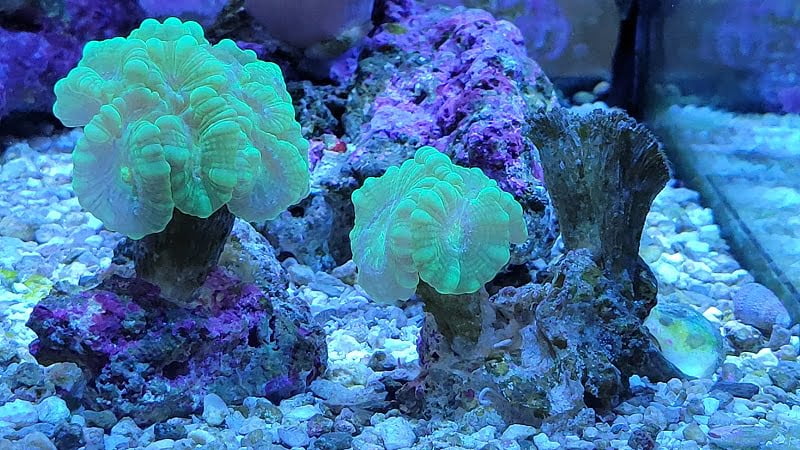CANDY CANE CORAL
The mesmerizing beauty of coral reefs never fails to captivate us. Among the multitude of stunning coral species, one particular gem stands out: the Kryptonite Candy Cane Coral. With its vibrant colors and unique characteristics, this coral species has become a prized addition to reef aquariums and an object of fascination for marine enthusiasts. In this blog, we will delve into the captivating world of the Kryptonite Candy Cane Coral, exploring its appearance, care requirements, and the allure it brings to underwater landscapes.
Appearance and Coloration:
The Kryptonite Candy Cane Coral, scientifically known as Caulastrea furcata, is a stony coral species native to the Indo-Pacific region. It belongs to the family of Faviidae corals and is highly sought after for its striking colors and distinct polyp structure.
The coral’s skeleton features intricate branches, resembling the shape of candy canes, hence its common name. Its polyps display a remarkable range of colors, including vibrant greens, blues, purples, and even fluorescent hues, reminiscent of the fictional mineral kryptonite. This vivid coloration adds a magical touch to any aquarium, creating an enchanting visual spectacle.
Care Requirements
To keep the Kryptonite Candy Cane Coral healthy and thriving, it is crucial to understand its care requirements. Here are some key considerations:
Lighting: Moderate to high lighting is essential for the optimal growth and coloration of the Kryptonite Candy Cane Coral. LED or T5 fluorescent lighting systems can provide the necessary intensity.
Water Parameters: The ideal water conditions for this coral species include a temperature range of 74-82°F (23-28°C), pH levels of 8.0-8.4, and a specific gravity of 1.024-1.026. Maintaining stable water parameters is crucial to prevent stress and promote coral health.
Water Flow: The Kryptonite Candy Cane Coral thrives in moderate water flow. Ensure proper water circulation within the aquarium to prevent detritus buildup and provide the coral with the necessary nutrients.
Feeding: While the Kryptonite Candy Cane Coral relies on photosynthesis for nutrition, it can also benefit from supplemental feedings. Target-feeding with zooplankton or small meaty foods, such as brine shrimp or mysis shrimp, can enhance its growth and vibrancy.
The Allure of the Kryptonite Candy Cane Coral: The allure of the Kryptonite Candy Cane Coral extends beyond its captivating appearance and care requirements. This coral species brings several benefits to reef aquariums, making it a desirable addition for both beginners and experienced aquarists alike.
Visual Impact: With its vibrant colors and unique branching structure, the Kryptonite Candy Cane Coral serves as a centerpiece in any aquarium, effortlessly grabbing attention and adding a touch of visual intrigue.
Ease of Care: Compared to some other coral species, the Kryptonite Candy Cane Coral is relatively easy to care for, making it an ideal choice for beginners entering the world of coral reef keeping.
Compatibility: This coral species is generally compatible with a variety of fish and invertebrates. It can coexist peacefully in a well-established reef aquarium, adding an extra layer of complexity to the ecosystem.
Conclusion:
The Kryptonite Candy Cane Coral, with its mesmerizing colors and captivating presence, has earned its place as a coveted jewel in the underwater realm. Its distinct polyp structure and enchanting appearance make it a treasure for reef aquarium enthusiasts. By providing the right care, lighting, and water parameters, this stunning coral species will thrive, transforming any aquarium into a vibrant and dynamic marine landscape. Embrace the allure of the Kryptonite Candy Cane Coral, and let its magic unfold in your aquatic world.
Frequently Asked Questions Click here



